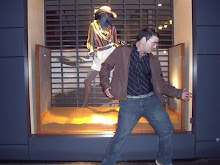Today, I achieved one of these things.
I arrived outside the gates of the Forbidden City around 11.30, to which a throng of people headed towards me. The first person to approach was a kindly gentleman with a crooked smile: “Hello Sir, would you like to buy a Rolex?” Catching my sense that this offer was too good to be true, he quickly added “…don’t worry, it’s a fake.”
My heart sank.
I knew it was a fake. He knew it was a fake. But I thought that was the beauty of the whole ‘street merchant bargaining’ process. He’d tell me it was real, and was selling it to pay for his kid’s heart surgery, I’d tell him it wasn’t real and that I wouldn’t waste my money buying something that looked like it had been found in a kinder surprise; and I especially wouldn’t pay more for an extra ‘L’ in Rolex. Eventually we would agree on a price amounting to $5NZD having danced our merry tango. But alas, even the street hawkers have now some sense of openness. Okay, so maybe I’m not being fair. No sooner had I left this merchant without so much as partaking in an offer/counter-offer dance of death, when a disheveled woman approached me crying, while clinging onto a limp child.
“Sir, my child is dead”, she said. She turned him around to face me, when I saw him open his eyes, ever so slightly. So I did what anyone else would have done in that situation – I pulled a silly face, making the child laugh. “Lady, I have good news…” I said. I didn’t get a reward, or even so much as a ‘thank you’. That’s what you get for helping a stranger, I suppose.
The Forbidden City was pretty cool – it cost 60rmb (about $15NZD) to get in, and I started out by photographing everything I thought was interesting. I realized it was probably a bit overboard when I found myself photographing concrete (albeit ornately patterned), and ended up getting lost in the many halls and palace rooms of the city. It was the home of the emperor, his family and concubines, but what really struck me was that nothing about the palace suggested luxury. Sure there was plenty of extravagance and fancy statues and such, and the imperial family were all ‘let them eat cake’ near the end, but the rooms weren’t particularly lavish nor comfortable – nothing like you’d expect to find in a European castle/palace, for instance.
Once I left the city I walked through to Tiananmen Square, home of the massacre (or ‘the incident’, if you’re a local). Suddenly I was back to people asking me if I could help their child or if I would like to ‘see some art’ (total scam, by the way). So far I have experienced two of the three major scams focusing on tourists in Beijing:
- Art scam. Strangers will come up to you and ask if you like art, as there’s an exhibition around the corner. It would mean a lot to them if you went, as some of their art is on display. They’ll lead you into a room and try and convince you to buy what is actually just a cheap knock-off of sometimes famous art, including works by Rodin. I have met three artists, so far.
- The motorbike scam. Motorbikes with carriages will stop and pick up tourists waiting for a taxi, and when they drop you off (often nowhere near where you wanted to go) they will show you a card which says “Beijing Motorcycle Scenic Tours – 120rmb” ($30NZD) and demand that you pay that. Now, you can get a taxi for around 10rmb, and they don’t warn you of that beforehand. I got caught out, and spent a couple of minutes arguing with the driver telling him I would only pay 13rmb. Of course I won.
- Tea scam. Someone will approach you and ask if they could practice their English with you, so you go to a teahouse where you have to foot the bill, usually for over 1000rmb ($250NZD) – the tea lady and the ‘student’ will then split the winnings. I haven’t met this scam yet.


No comments:
Post a Comment